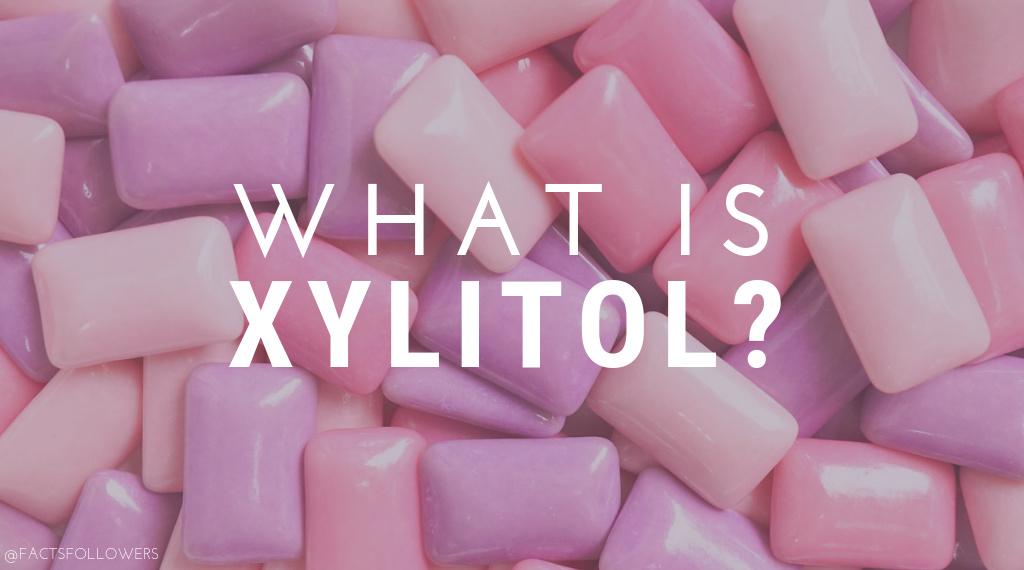- Xylitol is a type of carbohydrate called a sugar alcohol, or polyol.
- Xylitol occurs naturally in many fruits and vegetables. It is also commercially produced from birch bark and corn cob for use as a sweetener.
- Xylitol is a common ingredient in sugar-free chewing gum.
- Xylitol safety is confirmed by the U.S. Food and Drug Administration and the World Health Organization.
- Xylitol is known to inhibit the growth of oral bacteria (mutans streptococci) in plaque and saliva.
THE BASICS OF XYLITOL
Xylitol (pronounced Zy-Li-Tall) is a type of carbohydrate called a sugar alcohol, or polyol. They are water-soluble compounds that occur naturally in many fruits and vegetables. Xylitol is also commercially produced from birch bark and corn cob for use as a sweetener to replace calories from carbohydrates and sugars. Xylitol has been approved for use in food by the Food and Drug Administration (FDA) since 1963.
The name Xylitol comes from the word “xylose” or “wood sugar” because it was first made from birch trees. It has a cooling sensation in the mouth when consumed. As a result, xylitol is a preferred ingredient in sugar-free chewing gum and other oral health products like breath mints, mouthwash and toothpaste.
XYLITOL AND HEALTH
Xylitol has a chemical structure similar to sugar, but has fewer calories; while sugar has about 4 calories per gram, xylitol has just 2.4. Although it’s lower in calories, xylitol is equal to the sweetness of sugar. This makes xylitol unique because most sugar alcohols are not as sweet as sugar.
Xylitol is known to inhibit the growth of oral bacteria (mutans streptococci) in plaque and saliva. The act of chewing gum promotes the flow of saliva, which naturally protects teeth from cavity-causing bacteria. Based on a large amount of scientific evidence both the American Dental Association and the FDAhave recognized xylitol as beneficial to oral health.
Other health benefits of xylitol stem from its differences in chemical structure compared to sugar. Unlike sugar, xylitol is slowly and incompletely absorbed in the small intestine. This makes it and other sugar alcohols helpful for people with diabetes. Once absorbed, it can be used for energy while using little or no insulin, which means the impact on blood sugar is minimal.
Bacteria in the large intestine ferment any unabsorbed xylitol that passes through the small intestine. Because of this, overconsumption can produce abdominal gas and discomfort. For those following a low Fermentable Oligosaccharides Disaccharides Monosaccharides And Polyols (FODMAP) diet, food sources of xylitol are monitored because xylitol is a type of polyol.
RECOMMENDED INTAKES
There are few formal recommendations for xylitol intake. Digestive response to xylitol consumption can vary widely in adults so there is no minimum or maximum amount recommended, although 20 to 70 grams per day has been suggested to be well-tolerated. Related to oral health, some studies suggest the need for at least five to six grams and three exposures per day from chewing gum or candies. A recent review suggests that the effectiveness of xylitol on the prevention of dental caries in children is uncertain, but that doses of more than 4 grams per day have a greater effect. The American Academy of Pediatric Dentistry (AAPD) “supports the use of xylitol and other sugar alcohols as non-cariogenic sugar substitutes” but acknowledges inconsistent evidence showing significant reductions in dental caries in children.
FOOD SOURCES OF XYLITOL
Xylitol is found naturally in fruits and vegetables like strawberries, raspberries, mushrooms and cauliflower. It’s also found in other plants and agricultural materials like birch bark and corn husks, which are the sources of commercially made xylitol that are added to chewable multivitamins, gum drops, hard candies, sugar-free chewing gum and pharmaceuticals. It is also found in oral health products such as breath mints, throat lozenges and cough syrups.
Interested in learning the basics of other food, nutrition and health topics? Check out our “What Is” series.
